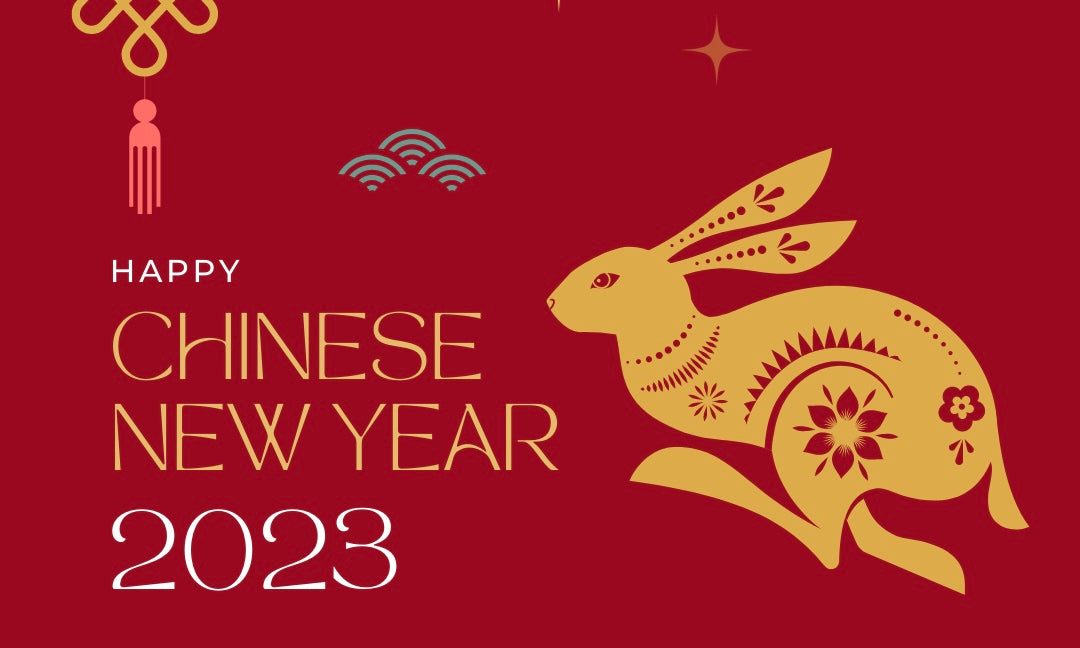Chinese New Year, also known as Spring Festival, is coming up in a few weeks. The New Year holiday falls on Sunday January 22nd, beginning the Year of the Rabbit, which will last until February 9th, 2024. In this blog post, we have outlined the symbolism behind the date and the animal chosen, celebrations, and food traditions.
How is the date decided?
Celebrated in China for thousands of years, the Lunar New Year holiday is based on a complex calendar combining both the cycles of the moon and the Earth’s orbit around the sun. The Lunar Calendar is typically 21-51 days behind the internationally-used, Gregorian calendar. The public holiday of the Lunar New Year lasts 7 days from New Year’s Eve to the sixth day of the New Year.
How long is the Chinese New Year?
The New Year lasts for two weeks from the New Moon, January 2023, until the next Full Moon, February 5th.
Significance of the Rabbit:
The Chinese Lunar New Year cycles through 12 Zodiac animals. 2023 will begin the “Year of the Rabbit.” There is also a 60 year cycle of five elements (wood, fire, earth, metal, and water) and this year is the “Year of the Wood Rabbit.”
Holiday Traditions:
New Year celebrations begin the night before the holiday (the night of January 21st), similar to the international New Year holiday. The holiday is centered around welcoming the good new and removing the old. The Chinese use the holiday as a time to worship ancestors, exorcize evil spirits, and pray for abundant harvests. Typical celebrations include lion and dragon dances, temple fairs, flower markets, and red packets, known as hongbao, filled with cash.
Food and drinks are an essential part of New Year celebrations. There are several layers of symbolism involved when it comes to “Lucky” dishes, including what the food’s name sounds like when it is said aloud, how it is prepared, and the way it is served. Many families will gather together to share a New Year’s Eve Dinner the night before the turn of the year. It is treated as an occasion to create a family reunion and is considered the most important dinner of the year.
Importance of Fish
Dishes and food customs vary across different regions in China. In Northern China, the star is typically “Jiaozi” (dumplings) with fillings such as vegetables, meat, and seafood. In Southern China and coastal areas, however, there are more colorful feasts with fish as a staple. Across the country, fish is one of the most important symbolic dishes included in the holiday feasts because the Chinese character for “fish” (鱼) reads the same as the character for the word “Plenty” (充) so eating fish at the New Year dinner symbolizes “Niannian Youyo” which translates to “plenty of wealth every year.” One of the most common ways to prepare fish for the Lunar New Year is a Steamed Prosperity Fish. You can try this traditional recipe with our Wild Alaskan Cod or Wild Pacific Halibut. Other preparation methods include a Steamed Black Cod, Chinese Style Oven Baked Fish, Glazed Fish with Greens, and Sticky Salmon with Greens.
We love the tradition of eating one fish on New Year's Eve (January 21) and one on New Year's Day (Jan 22) as it symbolizes "a wish for a surplus year-after-year."
Other traditional foods include Laba Congee, a dish made of rice, beans, peanuts, dried fruit, lotus seeds, nuts, and sugar, and Nian Gao, a sweet, sticky rice cake or Tang Yuan, a cake made of rice flour and filled with bean or nut powder.
If you celebrate Chinese New Year or are inspired this year, make sure to include Premier Catch in your New Year’s Eve feast and share your recipes with us on social media @premiercatch or send us an email at info@premiercatch.com!
年年有余 (Niánnián yǒu yú /nyen-nyen yo yoo/): May you always have more than you need!


